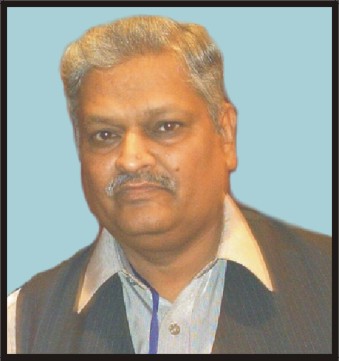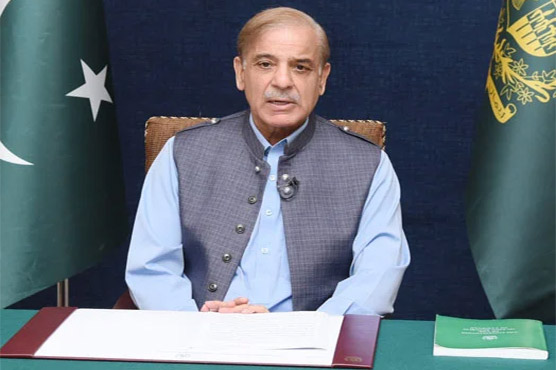Pakistan’s Media Crisis and GEO TV
RMNP report examines background to violence, media crisis
By Ehsan Ahmed Sehar, President, Rural Media Network Pakistan
Journalists in Pakistan live under the constant threat of killings,  harassment and other violence from all sides, including intelligence services, political parties,extremists, pressure and armed groups. According to the monitoring of the Rural Media Network Pakistan, five Pakistani journalists and four media workers have been killed up to 27th May this year. Despite past efforts to improve the situation, Pakistan remains one of the world’s deadliest nations for journalists, and the threat of impunity looms large.
harassment and other violence from all sides, including intelligence services, political parties,extremists, pressure and armed groups. According to the monitoring of the Rural Media Network Pakistan, five Pakistani journalists and four media workers have been killed up to 27th May this year. Despite past efforts to improve the situation, Pakistan remains one of the world’s deadliest nations for journalists, and the threat of impunity looms large.
It was revealed in RMNP’s annual press freedom report issued on 3rd May 2014 on the eve of World press Freedom Day, that the common tie in the killing of all 103 journalists from 2000 to April 2014 (except Daniel Pearl of Wall Street Journal and Wali Babar of GEO TV) is that their killers have never been found, prosecuted or punished. Nor the state, not the media organizations they worked for and nor their families have been able to pursue justice, which allows for the killing of journalists – and non-fatal but dangerous and disturbing intimidation and harassment – to go unabated. The RMNP report further reveals that the scale of impunity against journalists in Pakistan is staggering. According to data, over 2000 journalists have experienced harassment, intimidation, kidnap, arrest, detention, assault and injury since January 2000.Without invoking the legal process, impunity cannot begin to be scaled down. Most journalists killed come from lower income backgrounds, so their families cannot pursue the vagaries of Pakistan’s expensive and confusing justice system. This promotes impunity and allows anyone to threaten and target journalists because they know they can get away with murder. Journalists often complain about receiving threats, including from the country’s intelligence agencies, which can lead to violent attacks against them. Investigations, when commissioned, tend to lack credibility.
The areas bordering Afghanistan-FATA -Khyber Pakhtunkhwa are still dangerous areas for journalists, while Balochistan is most deadly place for journalists in Pakistan where four journalists were killed during last year. Three lost their lives in Khyber Pakhtunkhwa province. Journalists hailing from Balochistan province face violence and threats from ethnic, sectarian and separatist groups as well as from security forces and intelligence agencies. Tribal leaders, militants, district administrations, political agents and security agencies ask journalists in FATA, Balochistan and Khyber Pakhtunkhwa to get clearance from them before filing their news to print or electronic media. The RMNP report disclosed the fact that 36 journalists have been killed in Baluchistan province, and so far out most of their heirs have not been compensated.
The situation in the country’ biggest Punjab province is not better. On March 28,2014 Raza Rumi, a prominent television anchor of Express TV Channel known for his outspoken critical views on the Taliban insurgent group, survived an assassination attempt in Lahore while his driver died and body guard injured. According to reports, the Peshawar residence of Jamshed Baghwan, bureau chief for Express News, has twice been targeted in March – once with an improvised explosive device which was successfully defused by the police, and more recently, with a grenade. Although Baghwan and his family escaped unscathed, the incidents were clearly intended to send a message of intimidation and fear to the journalist.
Tragically, three of Baghwan’s colleagues lost their lives when Express TV van was targeted by members of the Tehreek-e-Taliban Pakistan group in Karachi January of this year, because of what the group referred to as the news group’s role as “propagandists”.
These are merely the latest incidents in a long list of attacks on journalists in Pakistan; attacks which usually go unpunished and can often have tragic consequences. A matter of days after the attack on Rumi, Prime Minister Nawaz Sharif expressed his commitment to improving media freedom and journalists’ safety during a meeting with a delegation from the Committee to Protect Journalists.
But soon after the Premier’s announcement, high profile Pakistani journalist and Geo Anchor Hamid Mir was seriously injured when his car was attacked near Natha Khan bridge at Shahra- e- Faisal in Karachi on April 19, 2014. Unknown armed men ambushed Mir’s vehicle when he was traveling from the airport to the Geo office. He received bullet injuries and was shifted to a private hospital. Sources confirmed that four gunmen riding two motorcycles opened fire on Hamid Mir’s car a few kilometers away from the Airport police station. Amid Mir’s brother alleged that Pakistan spy agency ISI has targeted his brother. GEO TV channel telecasted this story continuously for eight hours on April 19 by displaying Inter Services Intelligence Agency Chief Lt. General ZaheerulIslam’s portrait.
The Ministry of Defence took a serious action and moved the Pakistan Electronic Media Regulatory Authority (PEMRA) for action against Geo TV network for leveling allegations against the premier intelligence agency of the country, Inter Services Intelligence (ISI).The application had been moved following approval from Defence Minister Khawaja Muhammad Asif under the PEMRA Ordinance 2002, section 33 and 36 for legal action against the channel management for leveling allegations against the ISI and its chief, Lieutenant General Zaheerul Islam. The Geo TV network had repeatedly aired a portrait of the ISI and its chief, alleging that he was responsible for the attack on anchor Hamid Mir and that the injured journalist had informed his friend, his family and the management of the Geo TV in written about a possible attack on him.
The Ministry of Defence has lodged a complaint with PEMRA against Geo News. According to a statement issued on 22nd April, the ministry has also provided the authority with the relevant evidence that suggests the media group is involved in smearing the image of the Inter Services Intelligence (ISI). “The news channel has breached the code of conduct by accusing Director General (DG) of ISI Lt Gen Zaheerul Islam of masterminding the attempt on senior journalist Hamid Mir”, the statement said.
As the result of the allegation leveled against ISI Chief, Pakistani media divided into two groups. Other TV channels started airing programmes against their rival GEO TV, and demands were tabled on different talk shows that GEO TV Channel should be closed for its so-called anti state activities. An important political party Pakistan Tehreek-e-Insaf, led by cricketer-turned-politician Imran Khan, lashed out at GEO TV owner Mir Shakilur Rrehman at different public meetings and alleged he was minting money from the US, UK and India. He also held him responsible for his alleged involvement in the rigging of May 2013 general elections and declared his Jang-GEO group as the media cell of the ruling PML(N).
Meanwhile dozens of demonstrations and processions were held throughout Pakistan and more than 60 petitions have been filed in different courts of the country against Jang -GEO group anchor person Dr Shaista Lodhi for airing blasphemous programme in her “Morning Show”, along with film star Veena Malik and her husband Asad Bashr Khattak. More than twelve cases were registered against GEO TV owner Mir ShakilurRehman, anchor person Dr Ms Shaista Lodhi, film star Veena Malik and her husband Asad Bashir Khattak, including one in AhmedpurEast (which is RMNP’s base) for committing blasphemy. Pakistan Cable Operators Association of Pakistan (COAP) closed GEO telecasting throughout Pakistan to protest against embattled Geo and Jang network as it disrupted COAP’s press conference and office, and injured the sentiments of Muslims by airing controversial content. Due to this action, Geo TV channels transmission could not be watched in more than 90 per cent of all areas.
In its latest dramatic move, Jang group-owned Geo TV network has apologized to the Pakistan Army, the powerful spy agency ISI and its chief for leveling allegations against them over an assassination bid on leading anchor Hamid Mir.
In a published apology on 26th May in the English daily ‘The News’ and Urdu newspaper ‘Jang’, the media group clarified that they were respectful of Pakistani forces and its leadership.
“We have always appreciated their sacrifices to safeguard our borders and the security of our country,” the apology letter said.
“After serious retrospection, editorial debates, feedback and engagement with all parties, directly and indirectly, we have concluded that our coverage immediately after the tragic and unnerving attack on Hamid Mir on April 19 was excessive, distressful and emotional,” the media group said.
It accepted that the coverage of the incident was “misleading, disproportionate and inappropriate, giving impression of a campaign,” although it followed current media practices including the version of the armed forces.
The group apologized to the ISI, its chief Lt Gen Zaheerul Islam, his family, the Pakistan Army and television viewers for causing “deep hurt”, Dawn News reported.
The Jang Group clarified that the allegations were not hurled by the institution but by Mir himself and later repeated by his brother soon after the attempt on his life in Karachi.
Mir, who works for Geo TV, had said last month that he faced threats from both non-state and state actors including the ISI.
Following the attack on Mir, Jang group said, “We also want to bring it on the record that the ISI has been continuously and strongly complaining to our senior editors against some of our senior journalists, particularly against Hamid Mir. We will prove this and many other things at the proper time.
Journalists opined that if the apology is accepted, it will end the prevailing media crisis in Pakistan to some extent.


